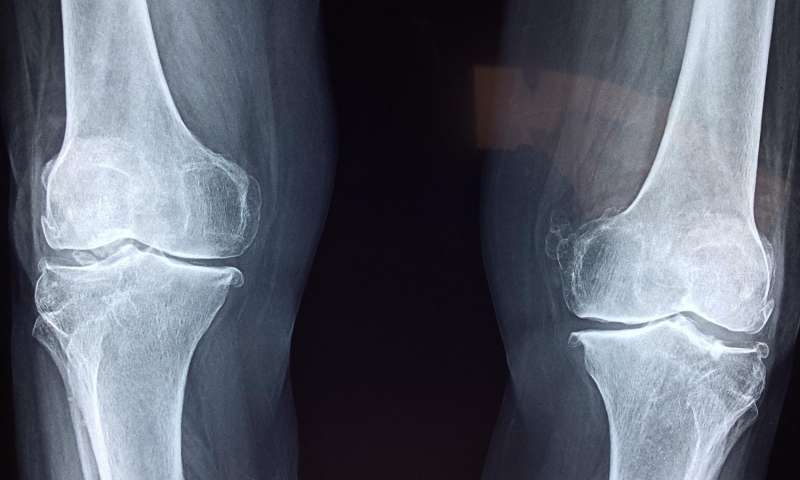현재 위치:홈 > 뉴스현황 > Press Events > Knee Joint Signals B...
저자: 업로드:2017-07-27 조회수:
Scientists from the Memorial Sloan Kettering Cancer Center, have revealed a communication system between the knee joint and developing bones in mice, which controls bone growth during early development and after injury.
The scientists, who published their findings (“Altered Paracrine Signaling from the Injured Knee Joint Impairs Postnatal Long Bone Growth”) in eLife, concluded that bone growth is controlled not only from within the bone itself, but by neighboring cells in nearby joints. These cells “talk” to developing bone cells to help them grow and mature. Once more is learned about how these communication channels function, this knowledge could result in improved therapies for correcting bone growth defects.
“We devised a genetic mouse model to study extrinsic long bone growth modulation, in which injury is specifically induced in the left hindlimb, such that the right hindlimb serves as an internal control. Remarkably, when only mesenchyme cells surrounding postnatal GPs [growth plates] were killed, left bone growth was nevertheless reduced,” write the investigators.
“GP signaling was impaired by altered paracrine signals from the knee joint, including activation of the injury response and, in neonates, dampened IGF1 [insulin-like growth factor 1] production. Importantly, only the combined prevention of both responses rescued neonatal growth. Thus, we identified signals from the knee joint that modulate bone growth and could underlie establishment of body proportions.”

"The identification of local signals coming from elsewhere, and their contribution to the growth plate is only just beginning to emerge," explains lead author Alberto Roselló-Díez, Ph.D., postdoctoral research fellow at Sloan Kettering. "A major obstacle is the lack of models where only cells outside of the growth plate can be altered, so we developed a mouse model to study the contribution of individual communication pathways outside the plate."
The team first tested whether damage to cells surrounding the growth plate would affect bone growth in the left leg of mice. The growth plate itself was left intact, as was the right leg for comparison to the left.
The group observed that damaging these surrounding tissues impaired growth plate function and stunted bone growth.
Further investigation revealed that loss of surrounding cells causes multiple changes in cell communication, which impairs bone cells'